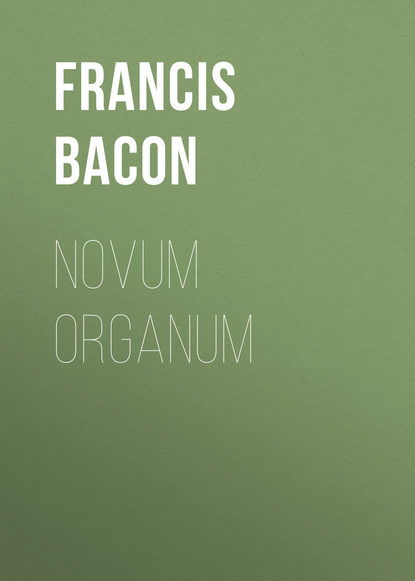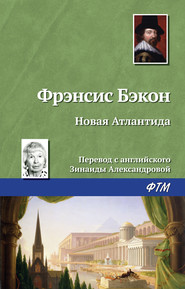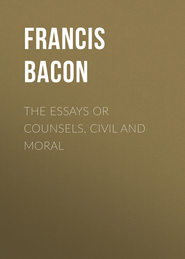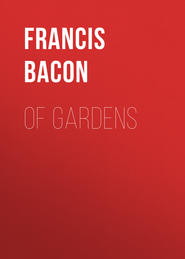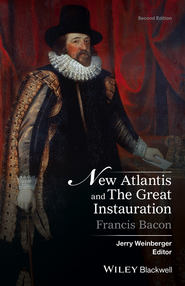По всем вопросам обращайтесь на: info@litportal.ru
(©) 2003-2024.
✖
Novum Organum
Настройки чтения
Размер шрифта
Высота строк
Поля
Bacon, in this Aphorism, appears to have entertained a fair idea of the use of the inductive and deductive methods in scientific inquiry, though his want of geometrical knowledge must have hindered him from accurately determining the precise functions of each, as it certainly led him in other parts of the Organon (V. Aph. 82 (#Book_I_Aph_82)), to undervalue the deductive, and, as he calls it, the dogmatic method, and to rely too much upon empiricism. —Ed.
58
The reader may consult the note of the 23d Aphorism (#Book_I_Aph_23) for the fault which Bacon censures, and, if he wish to pursue the subject further, may read Plato’s Timæus, where that philosopher explains his system in detail. Bacon, however, is hardly consistent in one part of his censure, for he also talks about the spirit and appetites of inanimate substances, and that so frequently, as to preclude the supposition that he is employing metaphor. —Ed.
59
Proclus flourished about the beginning of the fifth century, and was the successor of Plotinus, Porphyry and Iamblicus, who, in the two preceding centuries, had revived the doctrines of Plato, and assailed the Christian religion. The allusion in the text must be assigned to Iamblicus, who, in the fourth century, had republished the Pythagorean theology of numbers, and endeavored to construct the world out of arithmetic, thinking everything could be solved by the aid of proportions and geometry. Bacon must not be understood in the text to censure the use but the abuse of mathematics and physical investigations, as in the “De Augmentis” (lib. iv. c. 6), he enumerates the multiplicity of demonstration scientific facts admit of, from this source. —Ed.
60
See Livy, lib. ix. c. 17, where, in a digression on the probable effect of a contest between Rome and Alexander the Great, he says: “Non cum Dario rem esse dixisset: quem mulierum ac spadonum agmen trahentem inter purpuram atque aurum, oneratum fortunæ apparatibus, prædam veriùs quam hostem, nihil aliud quam ausus vana contemnere, incruentus devicit.”
61
The lowest axioms are such as spring from simple experience – such as in chemistry, that animal substances yield no fixed salt by calcination; in music, that concords intermixed with discords make harmony, etc. Intermediate axioms advance a step further, being the result of reflection, which, applied to our experimental knowledge, deduces laws from them, such as in optics of the first degree of generality, that the angle of incidence is equal to the angle of reflection; and in mechanics, Kepler’s three laws of motion, while his general law, that all bodies attract each other with forces proportional to their masses, and inversely as the squares of their distances, may be taken as one of the highest axioms. Yet so far is this principle from being only notional or abstract, it has presented us with a key which fits into the intricate wards of the heavens, and has laid bare to our gaze the principal mechanism of the universe. But natural philosophy in Bacon’s day had not advanced beyond intermediate axioms, and the term notional or abstract is applied to those general axioms then current, not founded on the solid principles of inductive inquiry, but based upon à priori reasoning and airy metaphysics. —Ed.
62
This hope has been abundantly realized in the discovery of gravity and the decomposition of light, mainly by the inductive method. To a better philosophy we may also attribute the discovery of electricity, galvanism and their mutual connection with each other, and magnetism, the inventions of the air-pump, steam-engine and the chronometer.
63
As Bacon very frequently cites these authors, a slight notice of their labors may not be unacceptable to the reader. Bernardinus Telesius, born at Cosenza, in 1508, combated the Aristotelian system in a work entitled “De Rerum Natura juxta propria principia,” i. e., according to principles of his own. The proem of the work announces his design was to show that “the construction of the world, the magnitude and nature of the bodies contained in it, are not to be investigated by reasoning, which was done by the ancients, but are to be apprehended by the senses, and collected from the things themselves.” He had, however, no sooner laid down this principle than he departed from it in practice, and pursued the deductive method he so much condemned in his predecessors. His first step was an assumption of principles as arbitrary as any of the empirical notions of antiquity; at the outset of his book he very quietly takes it for granted that heat is the principle of motion, cold of immobility, matter being assumed as the corporeal substratum, in which these incorporeal and active agents carry on their operations. Out of these abstract and ill-defined conceptions Telesius builds up a system quite as complete, symmetrical, and imaginative as any of the structures of antiquity.
Francis Patricius, born at Cherso, in Dalmatia, about 1529, was another physicist who rose up against Aristotle, and announced the dawn of a new philosophy. In 1593 appeared his “Nova de Universis Philosophia.” He lays down a string of axioms, in which scholastic notions, physical discoveries, and theological dogmas, are strangely commingled, and erects upon them a system which represents all the grotesque features of theological empiricism.
Severinus, born in Jutland, in 1529, published an attack on Aristotle’s natural history, but adopted fantasies which the Stagyrite ridiculed in his own day. He was a follower of Paracelsus, a Swiss enthusiast of the fifteenth century, who ignored the ancient doctrine of the four elements for salt, sulphur and mercury, and allied chemistry and medicine with mysticism. —Ed.
64
Bacon’s apology is sound, and completely answers those German and French critics, who have refused him a niche in the philosophical pantheon. One German commentator, too modest to reveal his name, accuses Bacon of ignorance of the calculus, though, in his day, Wallis had not yet stumbled upon the laws of continuous fractions; while Count de Maistre, in a coarse attack upon his genius, expresses his astonishment at finding Bacon unacquainted with discoveries which were not heard of till a century after his death. —Ed.
65
Philip of Macedon.
66
See Plato’s Timæus.
67
The saying of Philocrates when he differed from Demosthenes. —Ed.
68
The old error of placing the deductive syllogism in antagonism to the inductive, as if they were not both parts of one system or refused to cohere together. So far from there being any radical opposition between them, it would not be difficult to show that Bacon’s method was syllogistic in his sense of the term. For the suppressed premise of every Baconian enthymeme, viz., the acknowledged uniformity of the laws of nature as stated in the axiom, whatever has once occurred will occur again, must be assumed as the basis of every conclusion which he draws before we can admit its legitimacy. The opposition, therefore, of Bacon’s method could not be directed against the old logic, for it assumed and exemplified its principles, but rather to the abusive application which the ancients made of this science, on turning its powers to the development of abstract principles which they imagined to be pregnant with the solution of the latent mysteries of the universe. Bacon justly overthrew these ideal notions, and accepted of no principle as a basis which was not guaranteed by actual experiment and observation; and so far he laid the foundations of a sound philosophy by turning the inductive logic to its proper account in the interpretation of nature.
69
This is the opening of the Sixth Book of Lucretius. Bacon probably quoted from memory; the lines are —
“Primæ frugiferos fœtus mortalibus ægris
Dididerunt quondam præclaro nomine Athenæ
Et recreaverunt,” etc.
The teeming corn, that feeble mortals crave,
First, and long since, renowned Athens gave,
And cheered their life – then taught to frame their laws.
70
Prov. xxv. 2.
71
Τὸ τὶ ἦν εἶναι, or ἦν οὐσία of Aristotle. – See lib. iii. Metap.
72
These divisions are from Aristotle’s Metaphysics, where they are termed, 1. ὓλη ἢ τὸ ὑποκείμενον. 2. τὸ τὶ ἦν εἶναι. 3. ὅθεν ἡ ἀρχὴ τῆς κινήσεως. 4. τὸ οὗ ἕνεκεν – καὶ τὸ ἀγαθόν.
73
See Aphorism li. (#Book_I_Aph_51) and second paragraph of Aphorism lxv. (#Book_I_Aph_65_para_2) in the first book.
74
Bacon means, that although there exist in nature only individualities, yet a certain number of these may have common properties, and be controlled by the same laws. Now, these homogeneous qualities which distinguish them from other individuals, lead us to class them under one expression, and sometimes under a single term. Yet these classes are only pure conceptions in Bacon’s opinion, and cannot be taken for distinct substances. He evidently here aims a blow at the Realists, who concluded that the essence which united individualities in a class was the only real and immutable existence in nature, inasmuch as it entered into their ideas of individual substances as a distinct and essential property, and continued in the mind as the mold, type or pattern of the class, while its individual forms were undergoing perpetual renovation and decay. —Ed.
75
Bacon’s definition is obscure. All the idea we have of a law of nature consists in invariable sequence between certain classes of phenomena; but this cannot be the complete sense attached by Bacon to the term form, as he employs it in the fourth aphorism (#Book_II_Aph_4) as convertible with the nature of any object; and again, in the first aphorism (#Book_II_Aph_1), as the natura naturans, or general law or condition in any substance or quality —natura naturata– which is whatever its form is, or that particular combination of forces which impresses a certain nature upon matter subject to its influence. Thus, in the Newtonian sense, the form of whiteness would be that combination of the seven primitive rays of light which give rise to that color. In combination with this word, and affording a still further insight into its meaning, we have the phrases, latens processus ad formam, et latens schematismus corporum. Now, the latens schematismus signifies the internal texture, structure, or configuration of bodies, or the result of the respective situation of all the parts of a body; while the latens processus ad formam points out the gradation of movements which takes place among the molecula of bodies when they either conserve or change their figure. Hence we may consider the form of any quality in body as something convertible with that quality, i. e., when it exists the quality is present, and vice versâ. In this sense, the form of a thing differs only from its efficient cause in being permanent, whereas we apply cause to that which exists in order of time. The latens processus and latens schematismus are subordinate to form, as concrete exemplifications of its essence. The former is the secret and invisible process by which change is effected, and involves the principle since called the law of continuity. Thus, the succession of events between the application of the match to the expulsion of the bullet is an instance of latent progress which we can now trace with some degree of accuracy. It also more directly refers to the operation by which one form or condition of being is induced upon another. For example, when the surface of iron becomes rusty, or when water is converted into steam, some change has taken place, or latent process from one form to another. Mechanics afford many exemplifications of the first latent process we have denoted, and chemistry of the second. The latens schematismus is that visible structure of bodies on which so many of their properties depend. When we inquire into the constitution of crystals, and into the internal structure of plants, we are examining into their latent schematism. —Ed.
76
By the recent discoveries in electric magnetism, copper wires, or, indeed, wires of any metal, may be transformed into magnets; the magnetic law, or form, having been to that extent discovered.
77
Haller has pursued this investigation in his “Physiology,” and has left his successors little else to do than repeat his discoveries. —Ed.
78
Bacon here first seems pregnant with the important development of the higher calculus, which, in the hands of Newton and Descartes, was to effect as great a revolution in philosophy as his method. —Ed.
79





